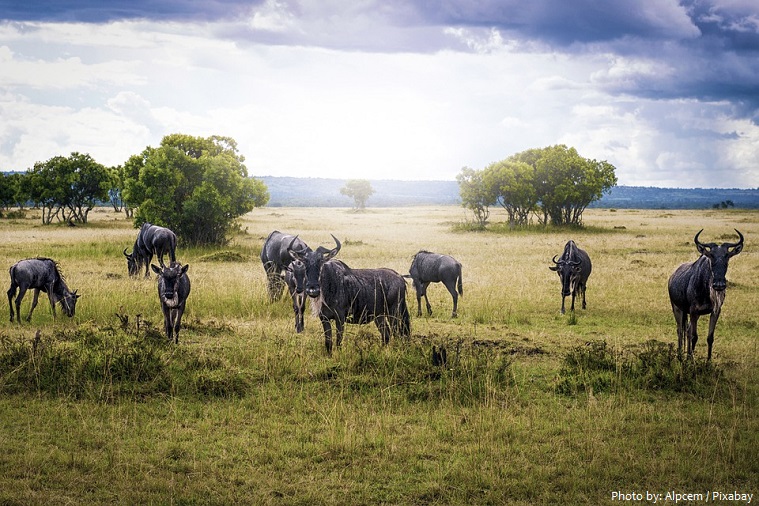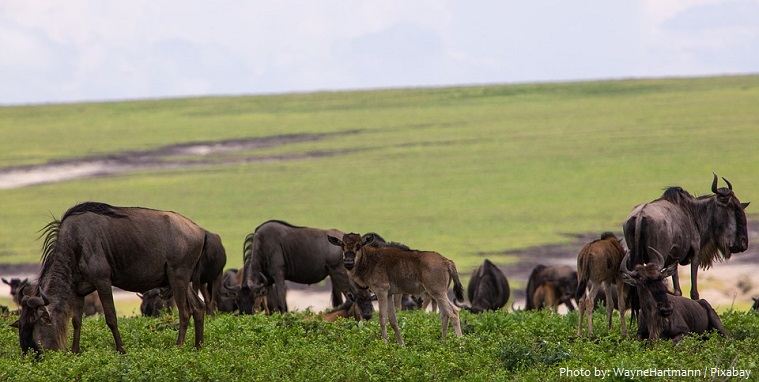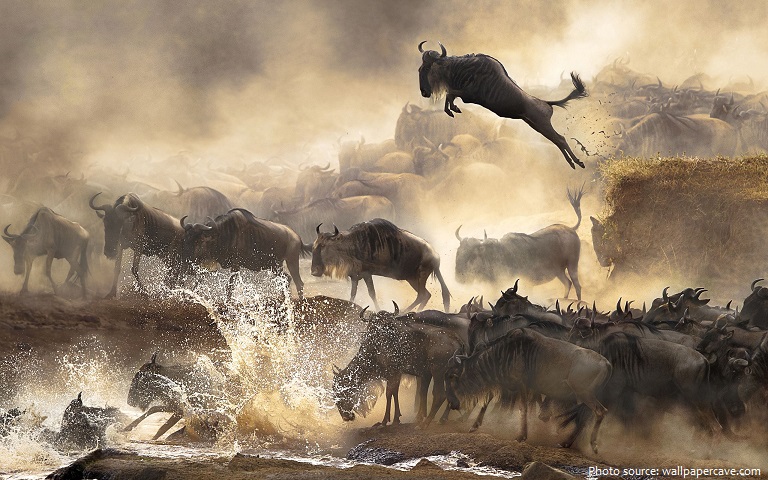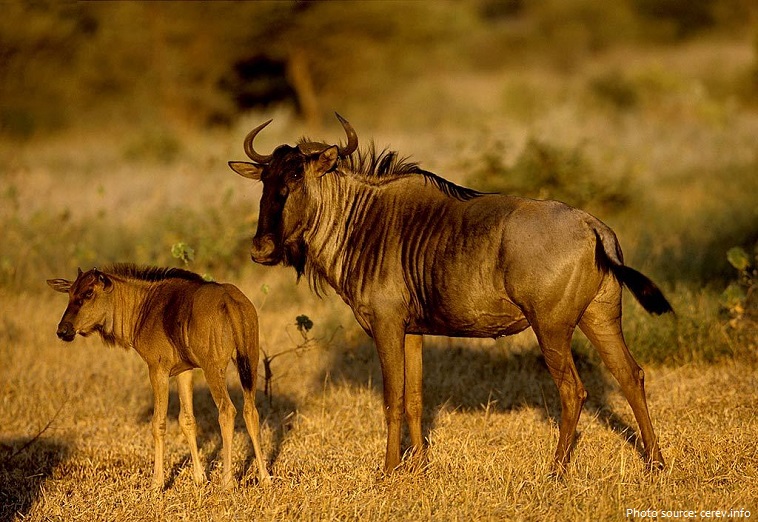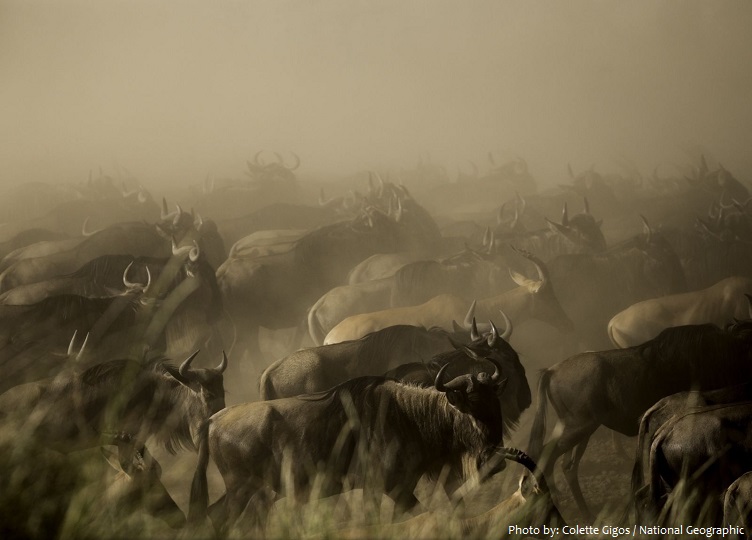The wildebeest also called the gnu is an antelope speacies.
There are two species of wildebeest: the black wildebeest and the blue wildebeest.
Wildebeest inhabit the plains and open woodlands of parts of Africa south of the Sahara. The black wildebeest is native to the southernmost parts of the continent. The blue wildebeest is native to eastern and southern Africa.
The blue wildebeest lives in a wide variety of habitats, including woodlands and grasslands, while the black wildebeest tends to reside exclusively in open grassland areas.
They are among the most specialized and successful of African herbivores and are dominant in plains ecosystems.
Wildebeest can live more than 40 years, though their average lifespan is around 20 years.
Wildebeest are one of the largest species of antelopes. They grow to 1.15 to 1.4 metres (45 to 55 in) at the shoulder, and they weigh between 150 and 250 kilograms when they are fully grown. The blue wildebeest is the bigger of the two species.
The most striking morphological differences between the black and blue wildebeest are the orientation and curvature of their horns and the colour of their coats.
The horns of blue wildebeest protrude to the side, then curve downwards before curving up back towards the skull, while the horns of the black wildebeest curve forward then downward before curving upwards at the tips.
Blue wildebeest tend to be a dark grey colour with stripes, but may have a bluish sheen. The black wildebeest has brown-coloured hair, with a mane that ranges in colour from cream to black, and a cream-coloured tail.
Wildebeest are herbivores. They rely heavily on grasses for their meals. They regularly dine on leaves taken from shrubs and bushes, but to a lesser degree than grass.
Although the prospects of finding food often push common wildebeests to relocate to different areas, the same applies to water. Their quests are often greatly fueled by finding water. They typically drink it twice daily.
Wildebeest live in herds of anywhere from 10 to hundreds of thuosands individuals during migration.
They often graze in mixed herds with zebra, which gives heightened awareness of potential predators.
Wildebeest can reach 80 km/h (50 mph) and are one of the fastest antelope species in Africa.
In some areas, the blue wildebeest migrates over long distances in the winter, whereas the black wildebeest does not.
The Serengeti wildebeest migration is a truly spectacular event. Over two million wildebeest, zebras and gazelles move through the Serengeti and Masai Mara ecosystems in search of green pasture, in a regular pattern. This is surely one of the greatest wonders of the natural world and is recognized as one of the “Seven Wonders of the Natural World.”
Wildebeest usually breed at the end of the rainy season when the animals are well fed and at their peak of fitness. This usually occurs between May and July, and birthing usually takes place between January and March, at the start of the wet season. The calves weigh about 21 kg (46 lb) at birth and scramble to their feet within minutes, being able to move with the herd soon afterwards, a fact on which their survival relies.
Major predators that feed on wildebeest include the lion, hyena, African wild dog, cheetah, leopard, and crocodile, which seem to favour the wildebeest over other prey. Wildebeest, however, are very strong, and can inflict considerable injury even to a lion.
Dutch settlers first discovered wildebeest in about 1700, on their way to the interior of South Africa. Due to their resemblance to wild cattle, these people called them “wild ox” or “wildebeest”.
Some sources claim the name “gnu” originates from the Khoikhoi name for these animals, t’gnu. Others contend the name and its pronunciation in English go back to the word !nu: used for the black wildebeest by the San people.
Fossil records suggest these two species diverged about one million years ago.
Wildebeest are related to oryx and gazelles.
Movies and television shows also feature wildebeests, including Khumba (Mama V), The Wild (Kazar and his minions), All Hail King Julien (Vigman Wildebeest), Phineas and Ferb (Newton the Gnu), The Great Space Coaster (newscaster Gary Gnu), and The Lion King (the wildebeest stampede that resulted in Mufasa’s death).

